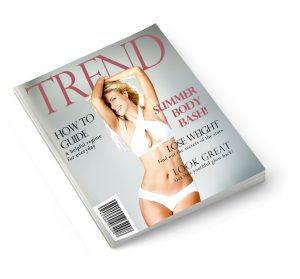
Dr. Kim Bissell studies the role the media play in health, eating disorders, distorted body image and body dissatisfaction among women and adolescent girls.
A number of studies have concentrated on college-age women, but Bissell’s focus starts before, and extends after, that age range. “Some eight or nine-year-olds are on diets,” Bissell says.
On the other end of the spectrum, her research found women as old as 75 who were dissatisfied with their body shape – their distorted body images grown worse over time.
“Grandmas have been dissatisfied with their bodies for years,” says Bissell, the Southern Progress Corporation Endowed Professor in Magazine Journalism at The University of Alabama. “It often starts before college and extends well beyond graduation.”
Bissell also looks at the types of media exposure. There’s a “thin ideal” category of media that include television shows such as “Friends” and “Gossip Girl” and magazines such as Vogue and Bazaar – media that have a high percentage of thin people as a main character. Bissell hopes to answer the question, if exposed to thin ideal media, is a person more critical of herself and others?

In addition to studying body image distortion and perceptions of the thin ideal, Bissell has also studied the role of the media in cultivating anti-fat bias and weight stigmatization.
In one study, more than 600 third through sixth graders were shown pictures of a thin person, an average weight person and an overweight person and then asked whom they would most like as a friend. When perceptions of fat bias were examined with media exposure, she found those who spent less time watching television indicated they were more likely to be friends with the overweight person.
Body image not only can produce extreme conditions like anorexia, but it also could affect job performance and relationships. Bissell looks at ways to educate women and girls about the potentially harmful messages found in the media.
“Media literacy is key.”
She says one of the bigger problems is many of the images seen in fashion and entertainment magazines are manipulated or manufactured digitally, thus presenting to viewers an unrealistic picture of beauty. Media literacy can help educate girls about the realness of the images they see.
“We know they’re Photoshopped, but we still want to look like that.”
An upcoming study will examine third through eighth graders’ media use, their social and home environment, food intake, anti-fat attitudes, body image and physical activity.
She’s seeking to determine what Southern children’s attitudes are about health, wellness and exercise. She’ll conduct a health literacy and physical activity intervention to assess which types of education materials are most appropriate in promoting health and wellness in children.